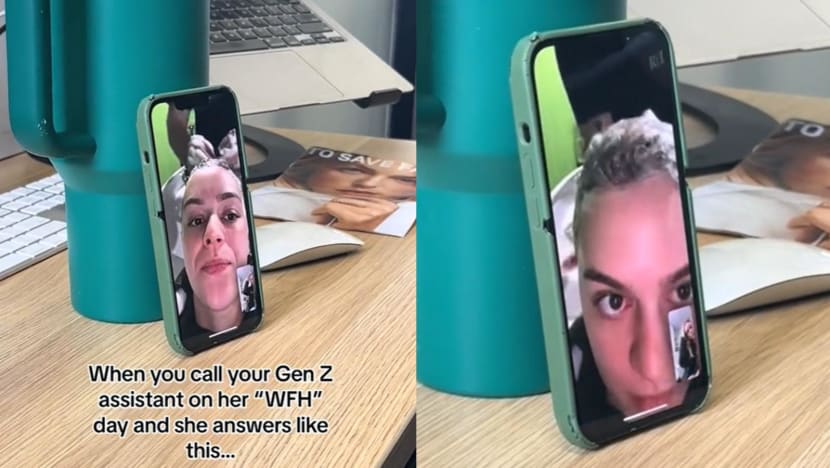Commentary: When WFH means work from hairdressers, not just home
Hair salons are installing USB ports, extra sockets and quiet areas for calls in a bid to draw back customers, says Emma Jacobs for Financial Times.

A public relations executive in the US posted her FaceTime conversation with a Gen Z employee who was having her hair washed. (Screengrab: TikTok/lucindybean)
LONDON: It’s increasingly common for clients to call Neil Moodie’s hair salon in advance to check the Wi-Fi. “Everybody brings their laptop and does their work, especially when they get their colour done. [I’ve] had a couple of people do a Zoom meeting when they’re here with the camera on.”
WFH - or working from the hairdressers - has its stresses. “It means our internet has to be perfect,” says Moodie, whose salon is based in Spitalfields, London. “Which it isn’t and it’s a nightmare.”
As the WFH trend becomes more popular, some United Kingdom salons are incorporating desks and quiet areas for people to work remotely while enjoying salon services.
Brooke Evans, owner of a salon based in Ironbridge in Shropshire, says that a significant number of clients work while their colour is processing. “With this in mind, we installed USB ports and extra sockets at every station from when we opened. Since then have added a coffee (and) bar area and extra seating for those clients who need a quieter area to work when making calls or video calls and just a more comfortable space to work at a laptop.”
Working from the hairdressers recently went viral on TikTok after a public relations executive in the United States posted her FaceTime conversation with a Gen Z employee who was having her hair washed. The young assistant told Newsweek: “As long as you’re getting your work done, I don’t see the harm.”
Her manager seemed to take it in good faith: “It doesn’t matter where she is to me, as long as her tasks are being delivered on time and delivered well,” she said.
STRUGGLE FOR SURVIVAL
Hairdressers have added office tools in order to lure customers. Many businesses are struggling following closures during pandemic lockdowns and high energy costs.
The increase in remote working is also presenting significant upheavals for salons, says Caroline Larissey, chief executive of the National Hair and Beauty Federation, observing that hair and beauty businesses in city centres and business districts are particularly affected, as they often rely on a regular clientele of office workers. According to the Local Data Company, the sector has experienced a sharp increase in closures since 2020 with a net loss of 1,721 to stand at 17,047 outfits.
Millie Kendall, chief executive of the British Beauty Council, a trade body, says suburban salons are faring better. They can benefit from people sneaking in a cut and colour while working from home, typically at lower prices.
After lockdown restrictions were lifted, the sector received a brief boost from clients seeking professional attention for their unwieldy locks.
“It was amazing how many people came in after COVID-19 and got their hair corrected,” says Moodie. This was despite a small black market in rule-defying hairdressers cutting hair in their own homes, the back of salons and in gardens.
But in the past couple of years, clients have been squeezed by the cost of living crisis, says Kendall. Plus, she says, shifts in attitudes to ageing mean that “women of a certain age are wearing their hair longer”, encouraged by the likes of actresses Sarah Jessica Parker, Helen Mirren and Julia Roberts. The fashion for embracing grey has also had an impact.
This all comes on top of increased electricity bills. A survey last year by UK price comparison website Uswitch found that energy bills comprise 40 per cent of hairdressers’ costs, driving up prices. The rise of TikTok tutorials and the proliferation of good styling tools for home use has also dented hairdressers’ business.
SALONS AS “THIRD PLACE”
But hairdressers can be a hub for community as well as a space for remote work. A recent project led by King’s College London is working with salons to disperse information about breast cancer and heart disease to customers in south and west London.
Kendall underlines the significance of the salon as a place for socialising. It’s “much more than a hair cut. If people have problems they talk to the hairdresser, they absorb a lot of trauma".
Long before the pandemic, American sociologist Ray Oldenburg identified the need for a “third place”, somewhere between home and the office to build community and exchange ideas. With the addition of Wi-Fi and charging ports, the hairdressers is a worthy contender.


















